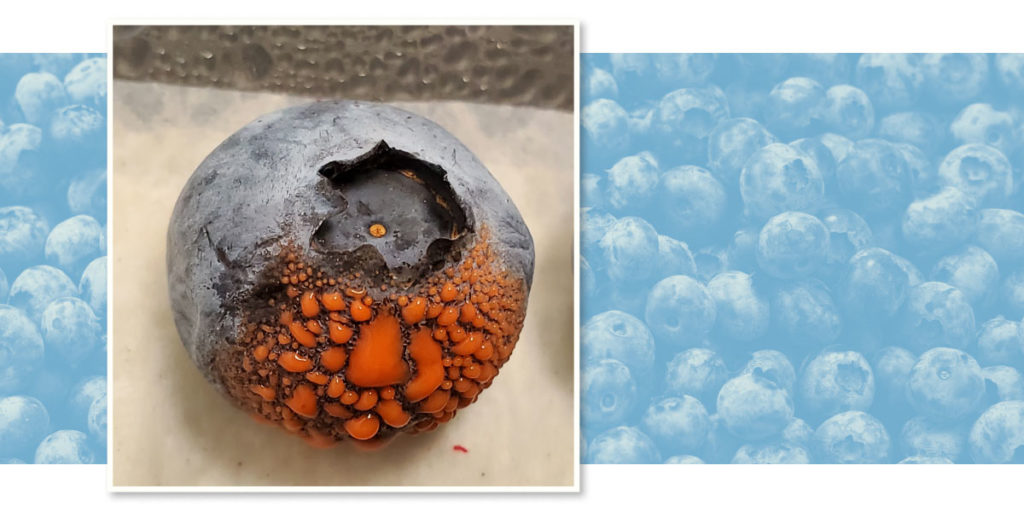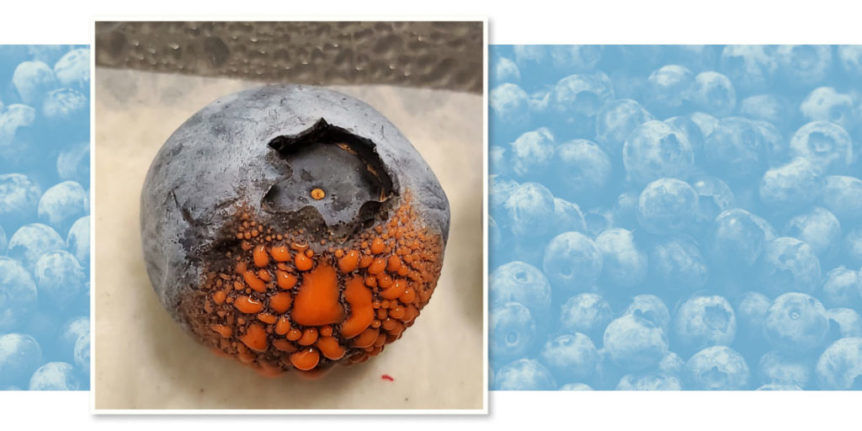
Photo by A. Gama, University of Florida
By Clint Thompson
The excessive wet weather associated with El Niño this winter has provided ideal conditions for blueberry diseases to pop up.
Phil Harmon, professor and Extension plant pathologist at the University of Florida Institute of Food and Agricultural Sciences (UF/IFAS), highlighted the two disease concerns growers should be wary of heading into harvest season. They are botrytis gray mold and anthracnose fruit rot.
“(Growers) need to be proactive about their preventative fungicide applications and keep a protective barrier out where they know that these diseases are going to be active. We have some tools to help with that as far as the blueberry advisory system. It is available on a phone app now,” Harmon said. “(Producers) are able to quantify for their area just how conducive the conditions are to disease, what the risks are of those two diseases; botrytis gray mold and anthracnose fruit rot. It’ll tell you which of those solutions you should be looking at as far as the more expensive but more efficacious systemic product, or some of the contact cheaper products that we know do a good job but have to be repeatedly applied or may not do quite as good of job as some of the others.
“We’re expecting to see a lot of disease pressure even where we’re hand harvesting and rapidly cooling our fruit like we generally do with our early production.”
Anthracnose Fruit Rot
Anthracnose fruit rot (AFR) is a significant disease on southern highbush blueberries. It creates sunken lesions on the blueberry surface. This leads to eruptions of spores from the lesions when the fruit begins the ripening process. AFR can lower fruit packouts, shorten the fruit’s shelf life and spread to other harvested fruit through the sorting and packing lines.










